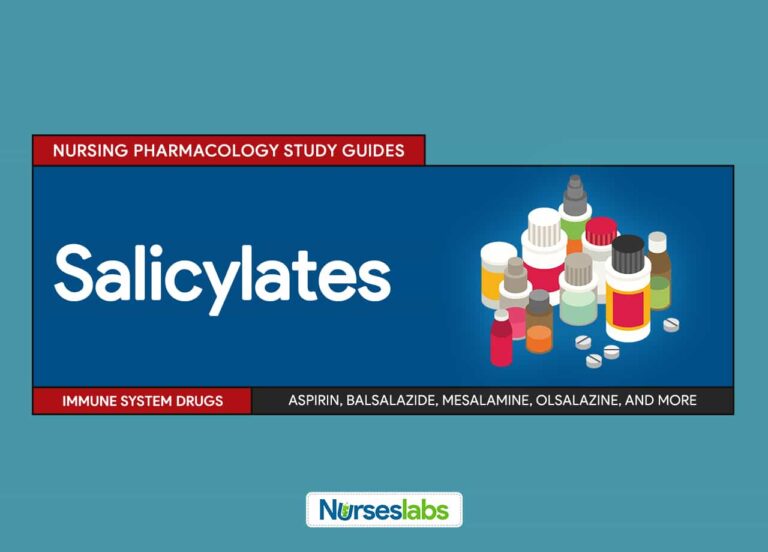Anti-inflammatory agents are drugs that block the effects of the inflammatory response. A popular and one of the oldest groups of anti-inflammatory agents is the salicylates.
Salicylates are salicylic acid compounds with anti-inflammatory, antipyretic (fever-blocking), and analgesic (pain-blocking) properties. These drugs are widely available as nonprescription drugs and are relatively nontoxic when used as directed. However, an individual’s response to different salicylates may vary.
Since salicylates are widely available over the counter (OTC), there is potential for abuse and overdosing. These drugs may also block the signs and symptoms of a present illness, contributing to the possibility of misdiagnosis.
Table of Contents
- Salicylates: Generic and Brand Name
- Disease Spotlight: Diseases with Chronic Inflammatory Response
- Therapeutic Action
- Indications
- Pharmacokinetics
- Contraindications and Cautions
- Adverse Effects
- Interactions
- Nursing Considerations
- Practice Quiz: Salicylates
- Recommended Resources
- See Also
- References and Sources
Salicylates: Generic and Brand Name
Here is a table of commonly encountered anti-inflammatory agents, their generic names, and brand names:
- Salicylates
- aspirin (Aspirin (Bayer), Empirin)
- balsalazide (Colazal)
- choline magnesium trisalicylate (Tricosal)
- diflunisal (Dolobid)
- melasamine (Pentasa)
- olsalazine (Dipentum)
- salsalate (Argesic)
- sodium thiosalicylate (Rexolate, Tusal)
Disease Spotlight: Diseases with Chronic Inflammatory Response
- The inflammatory response is a nonspecific reaction to any cellular injury and involves the activation of various chemicals and neutrophil activity. It destroys disease-causing microorganisms and promotes healing through a variety of potent chemical mediators. Clinical presentation includes heat (calor), redness (rubor), swelling (tumor), and pain (dolor).
- However, in conditions like neoplasms, viral invasions, autoimmune diseases, and transplanted organ rejections, inflammatory process becomes a chronic condition. In these conditions, damage is increased and inflammatory reactions are more severe.
Therapeutic Action
The desired and beneficial actions of salicylates are as follows:
- It inhibits synthesis of prostaglandin, an inflammatory reaction mediator.
- Antipyretic effect is through blocking of prostaglandin mediator of pyrogens (chemicals released by active white blood cells that cause increase in body temperature) at the thermoregulatory center of the hypothalamus.
- Aspirin at low levels can affect reduce platelet aggregation by inhibiting synthesis of thromboxane A2, a potent vasoconstrictor that normally increases platelet aggregation and blood clot formation. On the other hand, at higher levels, it inhibits the synthesis of prostacyclin, a vasodilator that inhibits platelet aggregation.
Indications
Salicylates are indicated for the following medical conditions:
- Treatment of mild to moderate pain, fever, numerous inflammatory conditions (e.g., rheumatoid arthritis and osteoarthritis).
- Mesalamine and balsalazide are indicated for ulcerative colitis and other inflammatory bowel conditions in adults.
- Sodium thiosalicylate is used in treatment of arthritis and muscular pain.
Here are some important aspects to remember for indication of anti-inflammatory agents, anti-arthritis, and NSAIDs in different age groups:
Children
- Ensure correct dose because this population is more susceptible to GI and CNS side effects of drugs. Most of these drugs are available over the counter so primary caregivers should be instructed to read the label to find out the dose that they are supposed to give.
- Aspirin and choline magnesium trisalicylate are the salicylates recommended for children. However, they are contraindicated when risks for Reye Syndrome is present.
- Acetaminophen is the most used anti-inflammatory drug for children. Overdose can cause severe hepatotoxicity.
- In general, several NSAIDs are approved for use in children, i.e. ibuprofen, naproxen, tolmetin, meloxicam, and indomethacin for some cases.
Adults
- Caution about the presence of these drugs in many OTC products.
- Instruct adults to report OTC drug use to their health care provider when they are receiving any other prescription drug to avoid possible drug-drug interactions and the masking of signs and symptoms of disease.
Cultural consideration: African Americans have a documented decreased sensitivity to the analgesic property of anti-inflammatory agents. They also have increased risk of developing GI adverse effects to these drugs. Educate these patients about signs and symptoms of GI bleeding and monitor them closely.
Pregnant women
- As for pregnant and nursing women, use is only justified when benefits clearly outweigh the risks.
Older adults
- Dose adjustment is needed as this age group is also more susceptible to GI and CNS drug side effects.
- Naproxen, ketorolac, and ketoprofen come with geriatric warnings because of reports of increased toxicity so these drugs should be avoided if possible.
- Gold salts, a treatment for arthritis is particularly toxic for geriatric patients. It can cause renal, GI, and liver problems.
Pharmacokinetics
Here are the characteristic interactions of salicylates and the body in terms of absorption, distribution, metabolism, and excretion:
| Route | Onset | Peak | Duration |
| Oral | 5-30 min | 0.25-2 h | 3-6 h |
| Rectal | 1-2 h | 4-5 h | 6-8 h |
| T1/2: 15 min-12 h Metabolism: liver Excretion: urine |
Contraindications and Cautions
The following are contraindications and cautions for the use of salicylates:
- Allergy to salicylates, NSAIDS, tartrazine (dye with cross-sensitivity with aspirin). Prevent risk of allergic reaction.
- Bleeding abnormalities. Changes in platelet aggregation.
- Impaired renal function. Drug is excreted through urine.
- Chickenpox or influenza. Risk of Reye Syndrome in children and teenagers.
- Surgery or other invasive procedures within one week. Risk of increased bleeding.
- Pregnancy and lactation. Potential adverse effects on the neonate or mother.
Adverse Effects
Improper use of salicylates may result to these adverse effects:
- GI: nausea, dyspepsia, heartburn, epigastric discomfort
- Hema: blood loss, bleeding abnormalities
- WARNING Salicylism can occur with high levels of aspirin characterized by dizziness, ringing in the ears, difficulty hearing, nausea, vomiting, diarrhea, mental confusion, and lassitude.
- WARNING Acute salicylate toxicity occurs at doses of 20-25 g in adults or 4 g in children. Signs include hyperpnea, tachypnea, hemorrhage, excitement, confusion, pulmonary edema, convulsions, tetany, metabolic acidosis, fever, coma, and cardiovascular (CV), renal, and respiratory collapse.
Interactions
The following are drug-drug interactions involved in the use of salicylates:
- Anticoagulants: increased risk of bleeding
- NSAIDs: increased serum levels of NSAID
- Activated charcoal: decreased absorption of salicylates
- Antacids: decreased effects of the salicylates
- Carbonic anhydrase inhibitor: increased risk for salicylism
Nursing Considerations
Here are important nursing considerations when administering anti-inflammatory agents:
Nursing Assessment
These are the important things the nurse should include in conducting assessment, history taking, and examination:
- Assess for contraindications or cautions (e.g., history of allergy to salicylate and tartrazine, renal disease, bleeding disorders, pregnancy and lactation, etc.) to avoid adverse effects.
- Establish baseline physical assessment to monitor for any potential adverse effects.
- Assess for presence of skin lesions to monitor for dermatological effects.
- Monitor temperature to evaluate drug’s effectiveness in lowering temperature.
- Evaluate CNS status to assess CNS effects of the drug.
- Monitor pulse, blood pressure, and perfusion to assess for bleeding effects or cardiovascular effects of the drug.
- Evaluate respirations and adventitious sounds to detect hypersensitivity reactions.
- Perform a liver evaluation and monitor bowel sounds to detect hypersensitivity reactions, bleeding, and GI effects of the drug.
- Monitor laboratory tests for CBC, liver and renal functions tests, urinalysis, stool guaiac, and clotting times to detect bleeding or other adverse effects of the drug and changes in function that could interfere with drug metabolism and excretion.
Nursing Diagnoses
Here are some of the nursing diagnoses that can be formulated in the use of this drug for therapy:
- Acute pain related to CNS and GI effects
- Risk for ineffective breathing pattern related to toxic effects
- Risk for disturbed sensory perception: auditory, kinesthetic related to toxic effects
Implementation with Rationale
These are vital nursing interventions done in patients who are taking anti-inflammatory agents:
- Administer drug with food to alleviate GI effects.
- Check all drugs being taken for possible salicylate ingredients to avoid toxic levels.
- Monitor for severe reactions to avoid problems and provide emergency procedure (e.g., gastric lavage, induction of vomiting, etc.)
- Arrange for supportive care and comfort measures (e.g., rest, environmental control) to decrease body temperature or to alleviate inflammation.
- Ensure patient is well hydrated during therapy to decrease risk of toxicity.
- Provide patient education about drug effects and warning signs to increase knowledge about drug therapy and to increase compliance with drug.
Evaluation
Here are aspects of care that should be evaluated to determine effectiveness of drug therapy:
- Monitor patient response to therapy (improvement in condition being treated, relief of signs and symptoms of inflammation).
- Monitor for adverse effects (e.g., GI upset, CNS changes, bleeding).
- Evaluate patient understanding on drug therapy by asking patient to name the drug, its indication, and adverse effects to watch for.
- Monitor patient compliance to drug therapy.
Practice Quiz: Salicylates
Here are some practice questions for this study guide. Please visit our nursing test bank page for more NCLEX practice questions.
1. All of the following are true about salicylates, except:
A. It can be purchased without prescription.
B. Taking salicylates can significantly improve nonspecific signs and symptoms and help pinpoint the exact diagnosis.
C. Salicylates block the release of chemicals released by active white blood cells that cause increase in temperature.
D. Aspirin inhibits synthesis of thromboxane A2 to reduce platelet aggregation.
1. Answer: B. Taking salicylates can significantly improve nonspecific signs and symptoms and help pinpoint the exact diagnosis.
Since salicylates are available OTC, it is prone to be overdosed. This can mask the signs and symptoms and can possibly contribute to misdiagnosis.
2. In a medical mission, student nurse Patricia was asked which salicylates are safe for children. After careful assessment of the patient, she would be right to name which drug(s) as safe to recommend for children?
A. aspirin
B. mesalamine
C. choline magnesium trisalicylate
D. A and C only
2. Answer: D. A and C only
Aspirin and choline magnesium trisalicylate are the only two salicylates recommended for use in children.
3. Which of the following patient statements will alert the nurse of possible contraindication to aspirin?
A. “I have a bad case of asthma. My last attack was four weeks ago.”
B. “My doctor advised me to lessen my consumption of red meat but I can’t seem to follow that.”
C. “As a child, I never get to enjoy fruit loops and colored chips because I develop rashes when I eat them.”
D. “I had a piece of my intestines last year.”
3. Answer: C. “As a child, I never get to enjoy fruit loops and colored chips because I develop rashes when I eat them.”
Allergies to fruit loops and colored chips may indicate allergy to tartrazine, a dye with cross-sensitivity to aspirin. Options A and B are not contraindications to aspirin. Option D may be correct but only if it happened within a week.
4. At which adult dosage can acute salicylate toxicity start to manifest?
A. 10 grams
B. 15 grams
C. 22 grams
D. 50 grams
4. Answer: C. C. 22 grams
At 20-25 g in adults and 4 g in children.
5. All of the following should be monitored regularly to detect adverse effects of salicylates, except:
A. cardiac markers
B. prothrombin time
C. SGPT level
D. urinalysis
5. Answer: A. cardiac markers
Adverse effects of salicylates include bleeding and hepatic and renal dysfunction which will reflect on abnormal levels of B, C, and D. Cardiac markers are irrelevant.
Recommended Resources
Our recommended nursing pharmacology resources and books:
Disclosure: Included below are affiliate links from Amazon at no additional cost from you. We may earn a small commission from your purchase which will help support us. Thank you! For more information, check out our privacy policy.
Pharm Phlash! Pharmacology Flash Cards #1 BEST SELLER!
Test-yourself review cards put critical clinical information for nearly 400 of the top generic medications at your fingertips. And, you can count on them for accuracy, because each card is based on content from Davis’s Drug Guide for Nurses. Increase your test scores in pharmacology class.
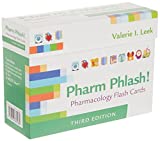
Focus on Pharmacology (8th Edition)
Focus on Nursing Pharmacology makes challenging concepts more approachable. Engaging learning features cultivate your clinical application, critical thinking and patient education capabilities. This updated 8th edition builds on your knowledge of physiology, chemistry and nursing fundamentals to help you conceptualize need-to-know information about each group of drugs.
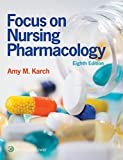
Pharmacology Made Incredibly Easy (Incredibly Easy! Series®)
Nursing pharmacology guide offers step-by-step guidance so you can grasp the fundamentals in enjoyable Incredibly Easy style. This is the perfect supplement to class materials, offering solid preparation for NCLEX® as well as a handy refresher for experienced nurses. Colorfully illustrated chapters offer clear, concise descriptions of crucial nursing pharmacology concepts and procedures.
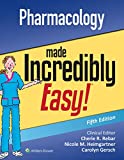
Lehne’s Pharmacology for Nursing Care (11th Edition)
The Eleventh Edition of Lehne’s Pharmacology for Nursing Care provides a thorough understanding of key drugs and their implications for nursing care. This text, written by renowned nursing educators, helps you comprehend and apply pharmacology principles. A clear and engaging writing style simplifies complex concepts, making even the most challenging pharmacology content enjoyable. We recommend this book if you want a comprehensive nursing pharmacology guide.
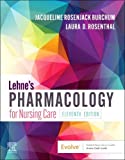
Nursing Drug Handbook
Nursing2023 Drug Handbook delivers evidence-based, nursing-focused drug monographs for nearly 3700 generic, brand-name, and combination drugs. With a tabbed, alphabetical organization and a “New Drugs” section, NDH2023 makes it easy to check drug facts on the spot.
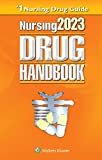
Pharmacology and the Nursing Process
The 10th edition of Pharmacology and the Nursing Process offers practical, user-friendly pharmacology information. The photo atlas contains over 100 unique illustrations and photographs depicting drug administration techniques. Updated drug content reflects the most recent FDA drug approvals, withdrawals, and therapeutic uses.
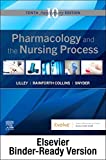
Mosby’s Pharmacology Memory NoteCards: Visual, Mnemonic, and Memory Aids for Nurses
The 6th edition of Mosby’s Pharmacology Memory NoteCards: Visual, Mnemonic, & Memory Aids for Nurses incorporates illustrations and humor to make studying easier and more enjoyable. This unique pharmacology review can be utilized as a spiral-bound notebook or as individual flashcards, making it ideal for mobile study.
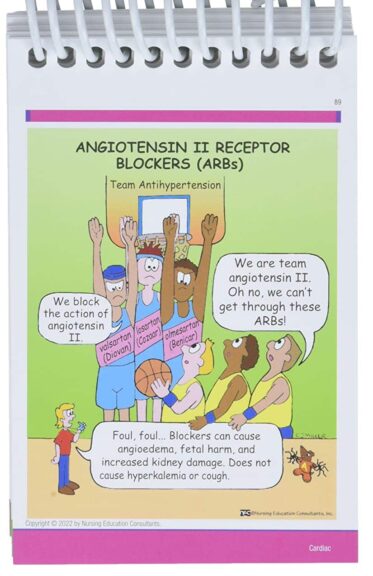
See Also
Here are other nursing pharmacology study guides:
- Nursing Pharmacology – Study Guide for Nurses
Our collection of topics related to nursing pharmacology - Pharmacology Nursing Mnemonics & Tips
These nursing mnemonics aim to simplify the concepts of pharmacology through the use of a simple, concise guide. - Generic Drug Name Stems Cheat Sheet
Learn about these generic drug name stems to help you make sense of drugs easier! - Common Drugs and Their Antidotes
A guide to drug antidotes that nurses should be familiar about. - IV Fluids and Solutions Guide & Cheat Sheet
Get to know the different types of intravenous solutions or IV fluids in this guide and cheat sheet. - Drug Dosage Calculations NCLEX Practice Questions (100+ Items)
Care to take the challenge? This quiz aims to help students and registered nurses alike grasp and master the concepts of medication calculation.
Drug Guides NEW!
Individual drug guides and nursing considerations for the most common medications used in nursing pharmacology:
- Acetaminophen (Tylenol)
- Aspirin
- Atorvastatin (Lipitor)
- Enoxaparin (Lovenox)
- Furosemide (Lasix)
- Gabapentin
- Hydromorphone (Dilaudid)
- Lisinopril
- Metoprolol
- Morphine
Gastrointestinal System Drugs
Respiratory System Drugs
- Antihistamines
- Bronchodilators and Antiasthmatics
- Decongestants
- Expectorants and Mucolytics
- Inhaled Steroids
- Lung Surfactants
Endocrine System Drugs
- Adrenocortical Agents
- Antidiabetic Agents
- Glucose-Elevating Agents
- Hypothalamic Agents
- Insulin
- Parathyroid Agents: Bisphosphonates, Calcitonins
- Pituitary Drugs
- Sulfonylureas
- Thyroid Agents
Autonomic Nervous System Drugs
- Adrenergic Agonists (Sympathomimetics)
- Adrenergic Antagonists (Sympatholytics)
- Anticholinergics (Parasympatholytics)
- Cholinergic Agonists (Parasympathomimetics)
Immune System Drugs
Chemotherapeutic Agents
- Anthelmintics
- Anti-Infective Drugs
- Antibiotics
- Antifungals
- Antineoplastic Agents
- Antiprotozoal Drugs
- Antiviral Drugs
Reproductive System Drugs
Nervous System Drugs
- Antidepressants
- Antiparkinsonism Drugs
- Antiseizure Drugs
- Anxiolytics and Hypnotic Drugs
- General and Local Anesthetics
- Muscle Relaxants
- Narcotics, Narcotic Agonists, and Antimigraine Agents
- Neuromuscular Junction Blocking Agents
- Psychotherapeutic Drugs
Cardiovascular System Drugs
References and Sources
References and sources for this pharmacology guide for Salicylates:
- Karch, A. M., & Karch. (2011). Focus on nursing pharmacology. Wolters Kluwer Health/Lippincott Williams & Wilkins. [Link]
- Katzung, B. G. (2017). Basic and clinical pharmacology. McGraw-Hill Education.
- Lehne, R. A., Moore, L. A., Crosby, L. J., & Hamilton, D. B. (2004). Pharmacology for nursing care.
- Smeltzer, S. C., & Bare, B. G. (1992). Brunner & Suddarth’s textbook of medical-surgical nursing. Philadelphia: JB Lippincott.
